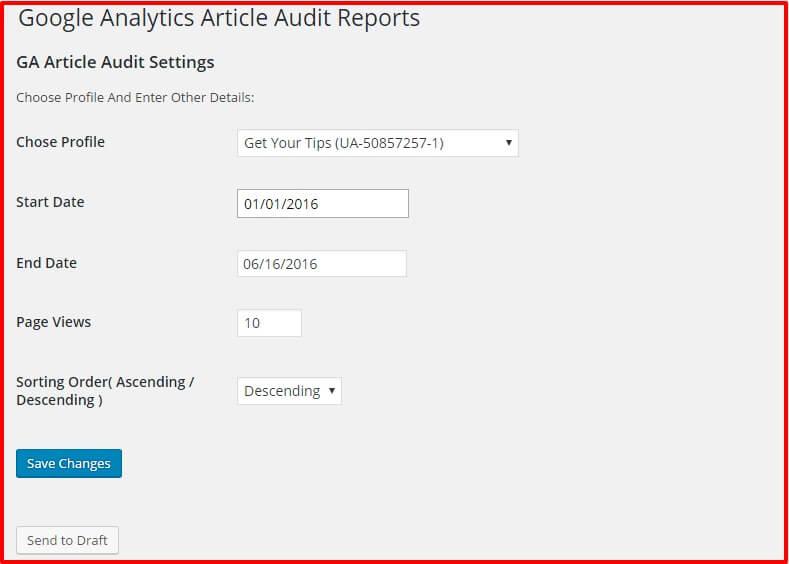If you want to grow your blog organically, there are two things you should be focussed on doing well:
- Updating your blog with new and useful content daily
- Optimizing the old content periodically
While nearly every blogger tries their best to update their blog with fresh and useful content as per the schedule, many don’t update their old posts often and allow them to gather moss – meaning getting stale in the eye of Google.
Regardless of your niche, what you blogged about a few years ago can lose its shine and utility unless it’s been updated pretty regularly.
Assuming you have a large blog with over 2000-odd posts, many of which written over the past couple of years, you want to make sure Google crawls and indexes them regularly for better search engine visibility.
Understanding Crawl Budget
Crawl budget is Google’s crawling frequency for a site within a particular time period. In other words, it’s the number of pages Google crawls on your site typically within a day, week or month.
If you have set up Google’s Search Console account for your self-hosted blog, you can discover how frequently Google crawls your site on a daily basis. Go to your Google Search Console account, click on Crawl on the navigation sidebar and then choose Crawl Stats.
You can see details of Googlebot’s activity in the last 90 days.
For example, in the example below, Google crawls nearly 252 pages per day on average. In other words, Google crawls nearly 7560 pages on an average every month.

Crawl frequency can go up or down depending on
- How frequently you update your blog
- The overall reputation of your blog
- The number of backlinks to your blog
Why Crawl Budget is Important for Your Blog
Every time Google bot visits your site, it has limited time to spend on your site, and hence, it can crawl only a limited number of URLs within the limited budget assigned for your site.
Therefore, if your blog doesn’t have a crawler-friendly structure, Google bot may not discover all URLs of your blog. As a result, some of your blog posts may not make it to Google’s Search Index at all.
This may happen to any blog, but the ones with outdated content and poor internal linking structure are particularly vulnerable.
Recognizing Thin Content
Thin content is any blog post that carries little or no value for the user. With Panda updates, Google officially announced its dislike for thin and low-quality content, punishing many blogs that resorted to spammy practices with no regard for high-quality content.
The old blog posts created a couple of years ago can become stale due to evolution in technology and best practices. Therefore, the content that is thick today can become thin in the future if it’s not updated periodically.
It is important to recognize the thin content in order to take one of the following actions:
- Improve your thin content
- Remove your thin content
Using Google Analytics to Recognize Thin Content
If you have set up a Google Analytics account for your blog, you can recognize thin content – the blog posts that are the weakest performers.
Log on to your Google Analytics dashboard, go to Behavior > Site Content > Content Drilldown.
You should be able to see the top-performing posts as well as the posts that are performing pretty badly.
As the screenshot below shows, you will find how many unique views a post has received within the given time period, the average time visitors spent on it, and the bounce rate of the individual post.

Setting Benchmark for Low Performing Posts
In order to determine if a post is performing poorly, you need to set a benchmark. Here’s what you can do:
- Set a Data Range (Past 6 or 12 Months)
- Select 5000 from Show Rows Drop-down
- Look for Posts with 10 or lower Unique Page Views
- Download the Report in the Export Menu
What to Do with the Report?
When you have got a comprehensive report of all the posts that have less than 10 unique page views, you can choose to either improve them or unpublished them altogether.
The discretion is completely yours. Sometimes reworking on an old post takes more time so you may choose to delete it. It all depends on whether or not you can improve it further.
Moreover, the manual process of creating a custom report, exporting it and then searching for the posts within your WordPress dashboard can be time consuming. The good news is there is a nice WordPress plugin that makes the entire process very easy, saving you tons of time.
WP Article Audit using Google Analytics
The WP Article Audit plugin takes the pain out of the entire process of filtering thin content within your blog.
All you have to do is install the plugin on your blog, connect the plugin to your Google Analytics profile, set the desired date range, set the benchmark for thin content and save changes.
The plugin automatically generates article audit reports right on your WordPress dashboard for you to take any action of your choice: Remove it altogether or edit the post to improve it further.
Here’s a screenshot of WP Article Audit plugin.

How to Update Thin Content for Better Performance
Once you decide to improve the performance of the thin content on your blog, follow the steps below to improve their performance.
Revamp the Content: If the post is very old, chances are much of the content is no longer relevant or accurate. The trends may have changed or even become completely obsolete. In order to make it current and useful, you need to use the updated info.
Look for mention of any outdated tool, plugin, screenshot, industry data, or best practices. Rather than offering a cosmetic facelift, try to treat it as a new post in order to make it truly valuable.
Recommended Post: A Layman’s Guide to Writing Authority Content Faster
Retain both Post URL and Keyword in Title: Since you’re rewriting an old post, there’s no need to change the post URL. In fact, if you try to post a URL, Google will treat it as a new post and you will lose any potential benefit of your old URL.
Similarly, if you want to change the title of your old post, try to retain the primary keyword. Changing or removing the primary keyword might result in losing any SEO value.
Rewrite Meta Description: Once you have updated the old post with accurate and current information, it’s time to brush off the old meta description and make it shiny. Although changing meta descriptions will not have any impact on the overall SEO value, it will certainly improve your CTR (Click through Rate) on Google Search Result Pages.
Update the Internal Linking: The old posts may contain some links to both internal sources as well as external sources. See to it if they can be optimized for better user experience. Chances are you may have written any new posts that you want to link to. Updating internal linking will boost your SEO value as well.
Add an Editor’s Note: In order to reduce potential confusion and boost transparency, you might want to add an editor’s note at the end of the post.
Take Away
Optimizing content goes a long way in ensuring your blog remains popular with your subscribers and relevant to search engines. No matter how frequently you blog, it’s imperative to update your old content at least once a week to help your blog make the most of Google’s crawl budget and grow organically.
What steps do you follow to improve the old content of your blog? Let me know in the comments below.
Recommended Posts:
- Why You Need to Stop Neglecting Your Old Content
- How to Optimize Your Older Blog Content for Long Tail Conversion
- Why and How to Properly Update Old Blog Posts
